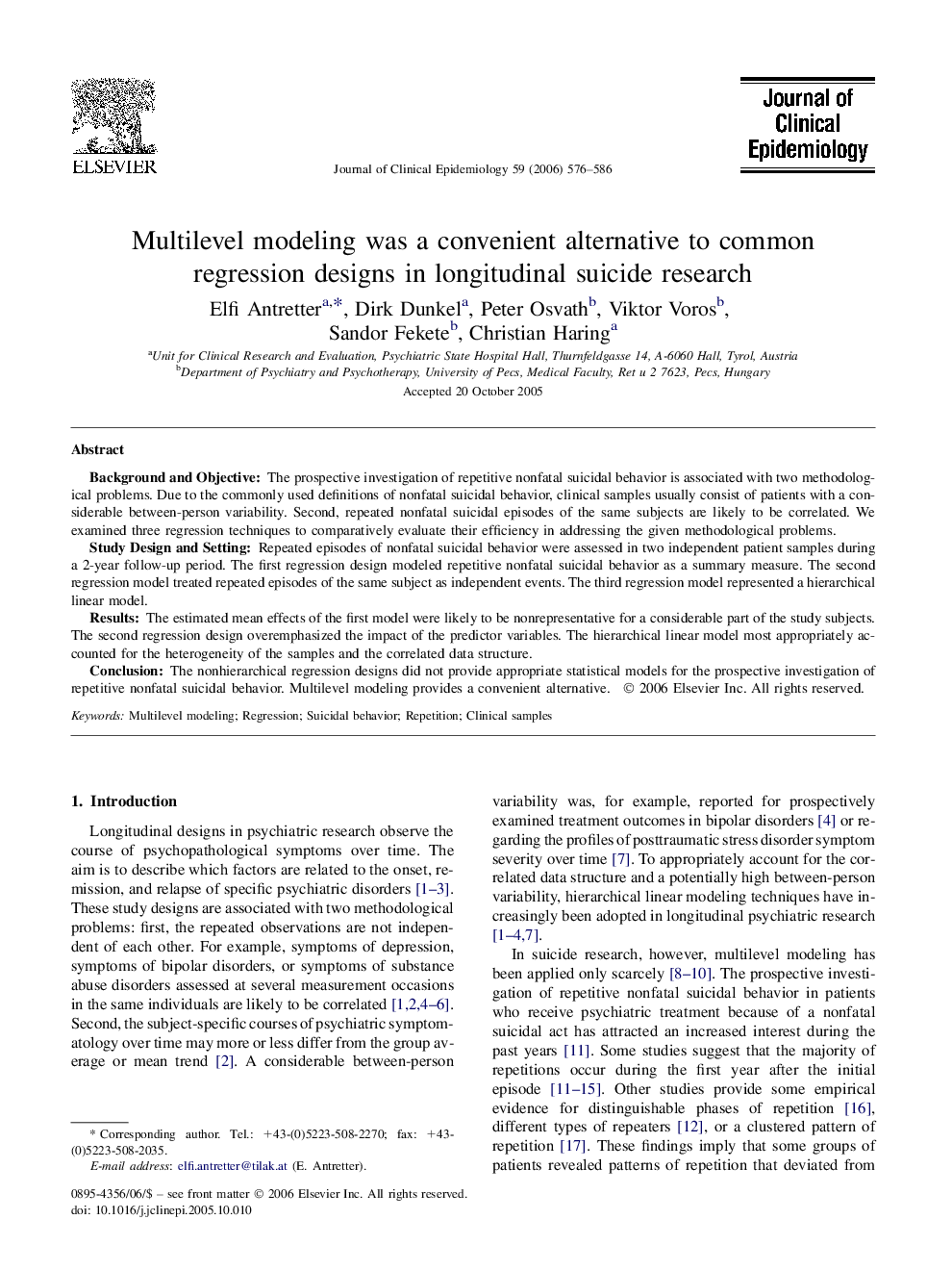| کد مقاله | کد نشریه | سال انتشار | مقاله انگلیسی | نسخه تمام متن |
|---|---|---|---|---|
| 1083633 | 951013 | 2006 | 11 صفحه PDF | دانلود رایگان |

Background and ObjectiveThe prospective investigation of repetitive nonfatal suicidal behavior is associated with two methodological problems. Due to the commonly used definitions of nonfatal suicidal behavior, clinical samples usually consist of patients with a considerable between-person variability. Second, repeated nonfatal suicidal episodes of the same subjects are likely to be correlated. We examined three regression techniques to comparatively evaluate their efficiency in addressing the given methodological problems.Study Design and SettingRepeated episodes of nonfatal suicidal behavior were assessed in two independent patient samples during a 2-year follow-up period. The first regression design modeled repetitive nonfatal suicidal behavior as a summary measure. The second regression model treated repeated episodes of the same subject as independent events. The third regression model represented a hierarchical linear model.ResultsThe estimated mean effects of the first model were likely to be nonrepresentative for a considerable part of the study subjects. The second regression design overemphasized the impact of the predictor variables. The hierarchical linear model most appropriately accounted for the heterogeneity of the samples and the correlated data structure.ConclusionThe nonhierarchical regression designs did not provide appropriate statistical models for the prospective investigation of repetitive nonfatal suicidal behavior. Multilevel modeling provides a convenient alternative.
Journal: Journal of Clinical Epidemiology - Volume 59, Issue 6, June 2006, Pages 576–586